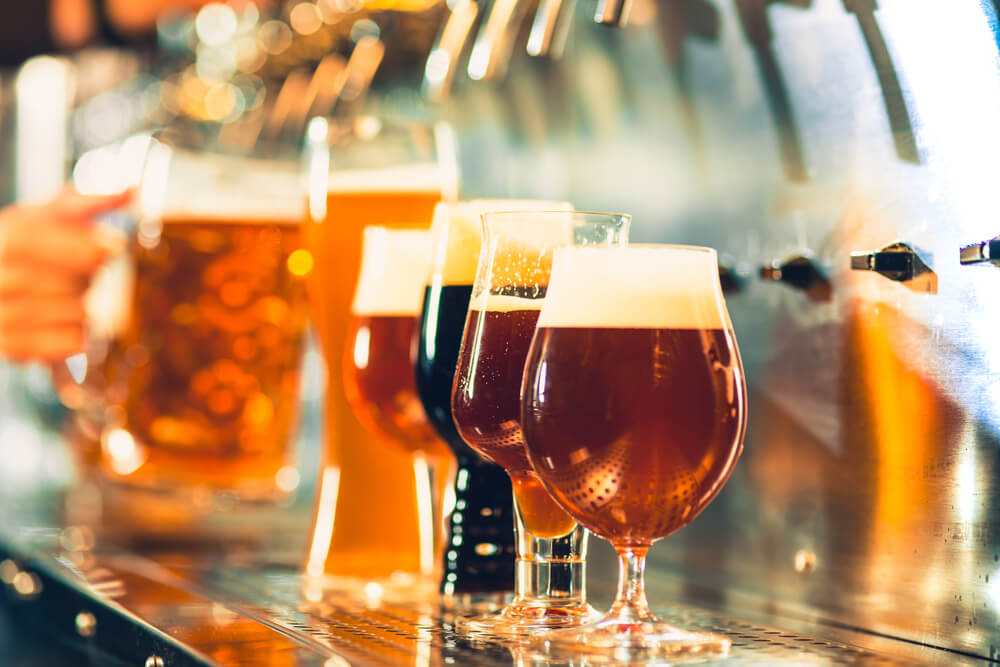The Spring Budget 2023 confirmed amendments to the alcohol duty system which change the manner in which the duty is applied. In addition, there will be changes to the duty rates, along with new reliefs and transitional arrangements.
Alcohol Duty (current system)
Beer and spirits are taxed (alcohol duty) based on alcoholic strength which is measured by alcohol by volume (ABV), while the other types of alcohol are taxed on a specific duty based on overall volume. In summary, wines are taxed on the total volume of the product rather than the total volume that is made up of pure alcohol. For products taxed on ABV, there are separate bands that increase duty rates according to alcoholic strength. This creates a system whereby products at the same alcoholic strength may be taxed at significantly different rates.
Most Budgets see either marginal changes in these rates or freezes, the economy may be a complex machine but the price of a beer or VAT (Vodka and Tonic) still holds some emotional relevance to the general population.
An example of how it works currently:
A supermarket sells a 1 litre bottle of gin. The strength of the product is 40% ABV.
The pre-tax price of the product is £15. Currently, spirit duty is £28.74 per litre of pure alcohol. The gin is 40% strength so multiply by the litre duty rate (£28.74) = £11.50 of alcohol duty, the price of the gin is now £26.50 (£15 + 11.50) and then we add the VAT at 20% to £26.50 which is £5.30 and therefore the retail price to consumer would be £31.80
For beer, you buy a pint of 5% lager. The duty would be 19.08p (the duty rate for lager under 7.5%) x 5% (the ABV of the lager) = 95.40 pence per litre (or 0.954 per ml), a pint is 568ml so we take 0.954 x 568ml = 54p per pint.
The current alcohol duties can be found here where you will find the complete lists and tables of the various rates across the various types of alcohol.
New Alcohol Duty rates
From 1 August 2023, the new system aims to simplify and broadly increases the tax as the alcoholic content increases. Different rates will apply to products between 3.5% abv and 8.4% abv. These new rates can be seen here, as well as the rate for draught relief.
If we just look at beer, as an example, the new rate for beer is split:
Duty on all alcoholic products less than 3.5% (ABV) = £ 9.27 per litre
Duty on beer at least 3.5% but less than 8.5% (ABV) = £21.01 per litre
Very quickly, we can see an incentive for producers to produce a beer that is 3.4% in strength and should create an obvious gap between the 5% premium products.
If we apply these new rates to the same earlier example for beer :
For beer, you buy a pint of 5% lager. The duty would be 21.01 (previously 19.08p) x 5% (the ABV) = 1.054 (previously 95.40 pence), a pint is 568ml so we take 0.954 x 568ml = 54p per pint. 59 which is an increase of 5p
If that beer was at 3.4%, the duty would be £9.27 per litre x 3.4% = 18 pence.
So a 4 pack of 568ml bottled beers contains £2.36 of alcohol duty (59p x 4), whereas the lower alcohol version would see duty of just 72p (18 x 4).
The big question then is whether producers and retailers will actually lower the price in line with the lowering of the alcohol content? Based on purely observational evidence (ie, regular buying of bottled beer at the supermarket), a price drop is unlikely, in the same way a reduction of VAT or freeze in fuel duty does not automatically mean lower taxes are passed to the consumer.
HMRC’s own impact study concluded that for draught beers (with the draught relief in play) would see no increase to a pulled pint. For bottled beers roughly 5p increase per bottle. For cider a 2p increase if draught and 5p if bottled. Spirits up by 3p and about 5p increase for wine.
Reliefs
- Small Producer Relief will now extend the relief that was previously just for small brewers, to all producers of alcoholic products under 8.5% ABV. So artisanal gin or wine producers who meet the conditions for small producer relief can enjoy the same benefits as artisanal brewers.
- Draught Relief is designed to reduce the duty on draught products which are sold in bars and other public venues. The relief will apply a reduced rate of duty on draught alcoholic products, again under 8.5% ABV which are sole wholesale in containers of at least 20 litres.
- There is also a temporary, transitional arrangement for wine producers and importers to facilitate the transition to the new duty calculation methods, this temporary provision will exist for 18 months (from 01st August 2023 through to 01st February 2025).
- For draft beers (so this is focused on the retail/pub environment), a reduction of 1p in duty with effect from 1 February 2025 and the current temporary wine easement will also end as planned on 1 February 2025.
Summary
The reforms were much needed, but as with any reform there are winners and losers, mainly losers if you drink at home and like to at least taste something akin to alcohol. For those who prefer a night out, then draught drinks will probably still go up at the bar but not because of the duty and as for wine drinkers and those of a sparkling persuasion, well, we can drown our sorrows or consider the journey to a tee total life, which does come with health (as well as tax) benefits.
Get in touch
If you want to know more about the new alcohol duties, how to calculate them or the impact this may have on your business, whether you are a producer, wholesaler or retailer, then speak to our VAT experts and tax advisors who can assist you with the application of any reliefs or transitional arrangements.


Sign up to our newsletter
Join our mailing list to receive regular updates on
the news and events you need to know about.

